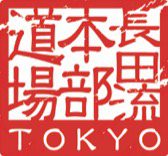There is a science to constructing a safe and sound gote/takatekote. If you do NOT know the science, you are likely to injure someone
Osada Steve
Gote and takatekote are the two words most commonly used to describe the bread-and-butter “box tie”, one of the most important building blocks in shibari.
Gote (後手) literally means “back hand”, though you may tweak this into “hands (tied) in the back” – no mention of torso wraps to qualify as a box tie. Takatekote (高手小手) literally means “high hand, little hand”, though you may tweak this into “hands angled upwards, forearms (tied)” – no mention of any torso wraps here either, not even a mention of front or back. In other words, both terms only make sense to people familiar with kinbaku/shibari (緊縛/縛り).
The term takatekote is mainly used by those who have come into contact with the Akechi Denki (明智伝鬼) lineage of Shibari. In Osada-ryu (長田流) we prefer using the term takatekote over gote, but we don’t get all worked up about it.
Before we continue, let’s take a closer look at the kote (小手). In kendo you earn points for successfully striking the kote, and that’s why contestants are wearing gloves that are reinforced at the wrists and along the forearms. You do want to stay away from rope touching the wrists – unless you wish to cause discomfort and pain. So the initial “wrist” tie to start your gote/takatekote should actually be located around the “kote” part of the forearms. You achieve this by bringing the elbows close enough together, so that the wrists do not end up facing each other. Of course, depending on the flexibility of the person being tied, this is sometimes easier said than done.
For the sake of argument one might say that a takatekote is always started at the back, unless mentioned otherwise. If you wanted to construct a takatekote in the front, you would add mae (前, front) and call it a mae takatekote.
Since the overwhelming majority of bread-and-butter box ties are starting at the back, you can skip the descriptor ushiro (後ろ, back). Be careful though, as with most kanji, the 後(back) has more than one reading. It can be read “ushiro” but also “go”. In the case of gote (後手) the meaning of back (go, 後) is already included, so it would be rather redundant to add an “ushiro” here. In other words, you find the term ushiro gote and ushiro takatekote only in the West, but not in Japan. If you were to tie the wrists in the front, you would call it maete (前手).
To complicate matters the kanji 後and 前can also be used to describe “after” and “before”. If you are on medication, you might want to take your pills after meals (食後, shokugo) or before (食前, shokuzen) – note that in this case the reading of 前is not “mae” but “zen”.
Enter the stickler faction and we learn that the term takatekote is also used to describe tying the arms in the back with the forearms at an acute angle to the upper arms, yet with the wrists still crossing each other. (See picture 1, below.) An even stricter tie would be the ushiro gassho shibari (後ろ合掌縛り, reverse prayer tie) where neither hands, nor wrists, nor forearms cross – the gold standard of gassho shibari being a position where both elbows touch each other with the forearms facing upwards perpendicular to the floor. (See picture 2, below).
The reverse prayer tie as well as its cousin the shukke shibari (出家縛り) were actually, in the hojojutsu days, bondages applied to monks or people working or residing within temple compounds. Bondages were also developed according to class affiliation (such as warrior class, normal citizens, Buddhist priests or monks, Shinto priests, yamabushi, pilgrims, blind people, hinin, etc.), and at the same time bondages evolved that would show the type and severity of the crime. These intricacies are often lost in modern-day shibari, especially outside Japan. As a result, you will find people doing ties like the reverse prayer simply for their inherent beauty or for a giggle – missing out on the historical significance and some of the finer points of Japanese rope art, where many of the ties originally had very specific meanings.
Word List
後- ushiro, behind
後- go, behind
後- ato, after
前- mae, before
後手- gote, hands in back
前手- maete, hands in front
食後- shokugo, after meals
食前- shokuzen, before meals
午前中- gozenchuu, morning (more precisely: the period between morning and noon)
午後- gogo, afternoon
小手- kote, forearm(s)
Bonus text for Sound of Music lovers and fans of the Trapp family
We all know that karaoke is short for kara orchestra (empty orchestra), or do we not? The “kara” (空) employed here is the same kara as in karate (空手) which means kind of “empty hand”, though you are welcome to use a variety of euphemisms, such as “weapon-less defense system” for example.
For one-up-manship you can try to combine mae (前) with kara (空) to end up with 空前(kuuzen). Remember? The character 前has different readings (see main text above), one of them being “zen”. Careful now, this is not the Zen as in Zen Buddhism, which is written as禅. Kuuzen therefore means something like “empty before”. If this is too ambiguous for you, try “unprecedented”.
Arms positioned in the “true” takatekote position
Arms in as-yet-incomplete gassho position. You are encouraged to assist your partner in achieving this position as part of your regular stretching exercises.
